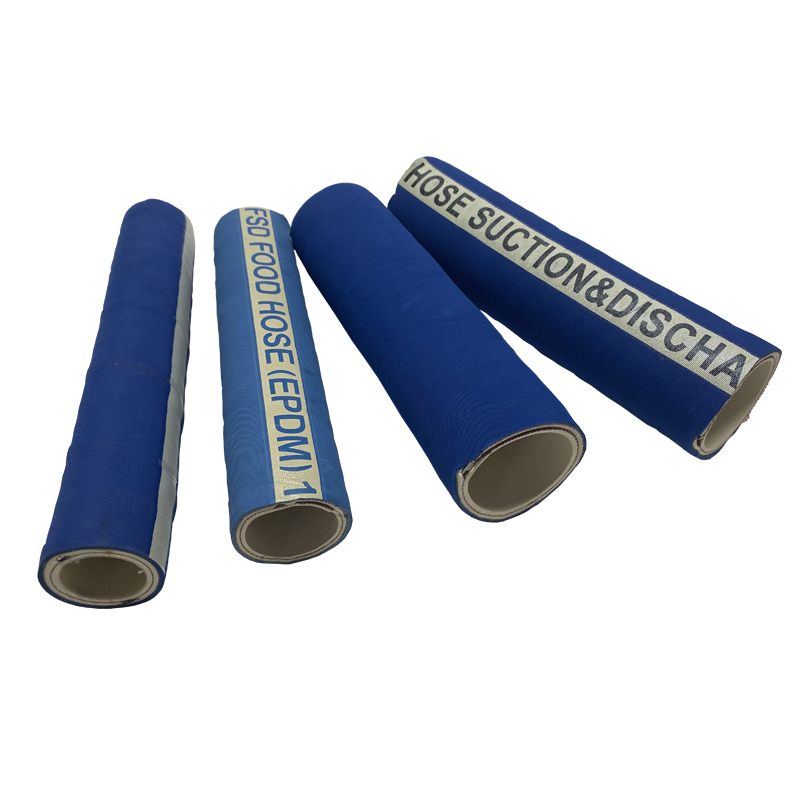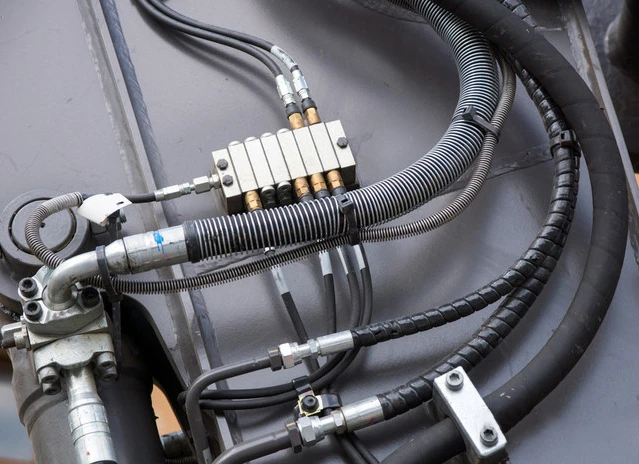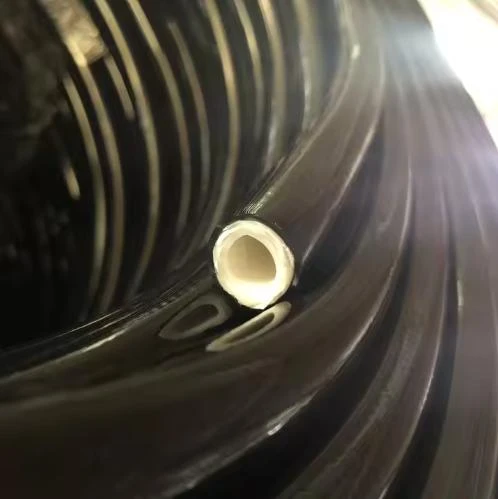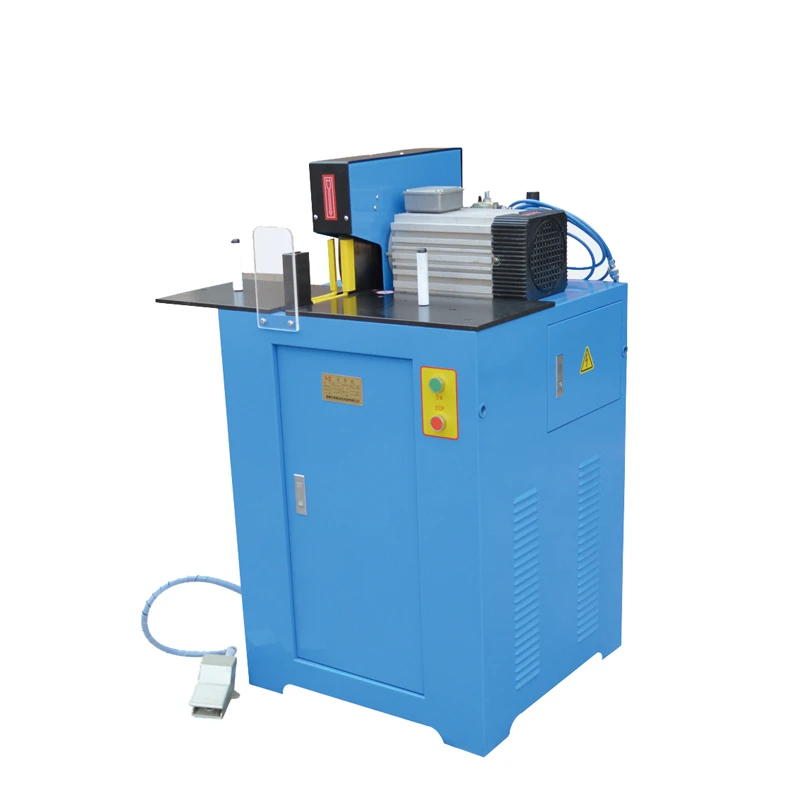Selang Kimia Kab
Selang kimia minangka jinis selang sing dirancang khusus kanggo ngangkut macem-macem bahan kimia kanthi aman, kalebu asam, alkali, pelarut, lenga, lan cairan sing mbebayani utawa agresif liyane. Selang iki digawe saka bahan sing tahan korosi, serangan kimia, lan abrasi kanggo njamin operasi sing aman lan efektif. Lapisan njero selang kimia biasane digawe saka karet sintetis, PTFE (Teflon), utawa senyawa khusus liyane sing nyedhiyakake tingkat resistensi sing dhuwur kanggo macem-macem bahan kimia. Tutup njaba asring dikuwatake nganggo kawat baja sing dikepang utawa lapisan tekstil kanggo nambah kekuatan lan menehi perlindungan saka karusakan mekanik. Selang kimia digunakake ing pirang-pirang industri, kalebu manufaktur kimia, farmasi, pertanian, minyak lan gas, lan produksi panganan, ing ngendi transfer bahan sing mbebayani utawa reaktif dibutuhake. Contone, ing industri kimia, selang iki digunakake kanggo nransfer bahan kimia industri ing antarane tangki lan peralatan pangolahan, nalika ing tetanèn, digunakake kanggo nyemprotake pestisida lan pupuk. Selang kimia uga digunakake kanggo ngangkut bahan bakar lan pelumas ing industri minyak lan gas. Kemampuan kanggo nolak degradasi kimia, tekanan, lan suhu sing dhuwur ndadekake dheweke ora bisa dipisahake ing aplikasi sing safety lan linuwih.
Faktor Apa sing Kudu Dianggep Nalika Milih Selang Kimia?
Nalika milih selang kimia, penting kanggo nimbang sawetara faktor utama kanggo mesthekake yen selang kimia iki cocok kanggo aplikasi tartamtu. Faktor pisanan sing kudu dievaluasi yaiku kompatibilitas bahan selang karo bahan kimia sing diangkut. Bahan kimia sing beda-beda bisa nyebabake macem-macem tingkat degradasi kanggo bahan selang, mula penting banget kanggo milih selang tahan kimia sing digawe saka bahan sing tahan kanggo jinis kimia tartamtu. Bahan umum kanggo selang kimia, kayata selang karet kimia, kalebu karet sintetik (kayata EPDM lan Nitrile), PTFE, lan poliethelin, sing menehi ketahanan kimia sing apik.
Rating tekanan selang kimia minangka faktor penting liyane. Kanggo sistem kanthi syarat tekanan dhuwur, selang kimia tekanan dhuwur kudu dipilih amarga kudu nangani tekanan sistem tanpa gagal. Kajaba iku, kisaran suhu iku kritis, amarga bahan kimia tartamtu bisa uga kudu ditransfer ing suhu dhuwur utawa kurang liwat selang kimia.
Fleksibilitas minangka pertimbangan penting liyane, utamane kanggo selang kimia fleksibel sing digunakake ing sistem sing mbutuhake gerakan utawa mlengkung. Dawane lan diameter selang uga kudu dipilih supaya cocog karo syarat sistem kanggo njamin aliran sing tepat lan ngindhari mundhut tekanan sing ora perlu. Tulangan kayata kawat baja sing dikepang utawa kawat baja spiral ditambahake kanggo nambah kekuatan selang kimia lan nyegah kinking utawa ambruk.
Pungkasan, priksa manawa selang kimia kasebut cocog karo standar lan sertifikasi industri sing cocog, kayata sing disetel dening standar FDA, ISO, utawa EN, kanggo mesthekake yen selang kasebut aman digunakake ing aplikasi tartamtu. Kanthi nimbang faktor kasebut, sampeyan bisa milih selang kimia sing nyedhiyakake layanan sing aman lan dipercaya saka wektu.
Bahan Apa sing Biasane Digunakake kanggo Nggawe Selang Kimia, Lan Kenapa Iku Cocok?
Selang kimia digawe saka bahan sing dipilih amarga tahan kanggo macem-macem bahan kimia lan kahanan atos sing bisa ditemoni ing aplikasi industri lan komersial. Salah sawijining bahan sing paling umum digunakake kanggo selang kimia yaiku karet sintetik, kayata EPDM (monomer etilena propylene diene), sing menehi resistensi banget kanggo asam, alkali, lan pelapukan. Karet nitril uga umum dipigunakaké amarga tahan kanggo lenga, bahan bakar, lan pelarut, saéngga becik kanggo ngangkut produk minyak bumi utawa bahan kimia sing mbebayani. PTFE (Teflon) minangka bahan liyane sing populer kanggo selang kimia amarga sifate non-reaktif lan tahan kanggo macem-macem bahan kimia agresif lan suhu dhuwur. hoses PTFE utamané cocok kanggo nransfer asam kuwat, caustics, lan pelarut sing bisa break mudhun bahan liyane. Kajaba iku, poliethelin digunakake ing aplikasi tartamtu kanggo ketahanan lan keluwesan kimia, utamane ing selang kimia tetanèn lan bahan pangan. Kanggo nambah daya tahan lan kekuatan, selang kimia asring dikuwatake nganggo lapisan kawat baja utawa jalinan tekstil. Tulangan kasebut nyegah selang ambruk ing tekanan, njamin keluwesan, lan menehi perlindungan marang karusakan mekanik eksternal. Kombinasi bahan kasebut njamin manawa selang kimia bisa kanthi aman lan andal nangani zat agresif sing dirancang kanggo, nalika njaga keluwesan lan daya tahan ing lingkungan sing tantangan.
Decoding the Corrosion-Resistant Core of Chemical Hoses: Material Science and Engineering Design
SINOPULSE combines advanced material science with precision engineering to create flexible chemical hoses that excel in transporting aggressive fluids. The ability to resist corrosion hinges on carefully selected inner tube materials, reinforced structures, and protective layers—each element designed to withstand specific chemical challenges. Let’s explore the technical foundations that make SINOPULSE chemical-resistant hoses the trusted choice for demanding industrial applications.
1. Fluoropolymer Liners: The First Line of Defense
At the heart of SINOPULSE chemical transfer hoses lies a fluoropolymer inner tube, typically PTFE (Polytetrafluoroethylene) or FEP (Fluorinated Ethylene Propylene). These materials owe their exceptional corrosion resistance to a unique molecular structure: a tightly packed carbon-fluorine bond (C-F) that is one of the strongest in polymer chemistry. This bond resists breakage from strong acid (e.g., sulfuric acid), strong base (e.g., sodium hydroxide), and solvents (e.g., acetone), making PTFE-lined hoses compatible with over 98% of industrial chemicals. For example, in pharmaceutical manufacturing, PTFE-lined hoses safely transport concentrated hydrochloric acid without swelling or degradation, maintaining fluid purity and hose integrity over years of use.
2. Elastomeric Compounds for Specialized Chemistries
When applications demand flexibility at lower temperatures or resistance to specific chemical families, SINOPULSE employs high-performance elastomers like fluoroelastomer (FKM) or ethylene-propylene-diene monomer (EPDM). FKM, with its cross-linked fluorocarbon structure, excels in resisting petroleum-based solvents and high-temperature oxidizers, making it ideal for aerospace hydraulic fluids. EPDM, conversely, thrives in aqueous environments, providing superior resistance to ketones and steam—critical for wastewater treatment systems where dilute acids and alkalis are common. These materials undergo rigorous swelling tests (e.g., ≤0.5% volume change in ASTM D471) to ensure long-term reliability.
3. Reinforcement Layers: Structural Integrity Under Pressure
Even the most corrosion-resistant liners require robust support to handle high-pressure applications. SINOPULSE high-pressure chemical hoses integrate braided or spiral-wound reinforcement layers, such as stainless steel wire or aramid fibers, to distribute internal pressure evenly. A 304 stainless steel braid, for instance, adds mechanical strength capable of withstanding 500 bar (7250 PSI) burst pressure while remaining non-reactive to most chemicals. This design prevents liner collapse or delamination, ensuring safe fluid transfer in refinery pipelines or chemical reactor feed systems.
4. Protective Outer Covers: Shielding Against External Threats
The outer layer of SINOPULSE chemical hoses is engineered to protect against external hazards like abrasion, UV radiation, and physical impact. Polyurethane (PU) or chloroprene rubber covers offer excellent resistance to cutting and weathering, vital for outdoor chemical transfer in mining or offshore platforms. For static-sensitive environments, anti-static additives in the outer layer dissipate electrical charges, eliminating ignition risks when handling flammable solvents like methanol.
Engineered for Synergy: How Layers Work Together
The true power of SINOPULSE chemical-resistant hoses lies in the synergy between layers: the fluoropolymer liner repels chemical attack, the reinforcement layer maintains structural stability, and the outer cover shields against environmental damage. This tri-layer system undergoes rigorous testing, including permeation resistance (ASTM F739) to ensure minimal chemical leakage and thermal cycling to validate performance across extreme temperatures.
In industries where chemical compatibility and safety are non-negotiable—from petrochemical processing to semiconductor manufacturing—SINOPULSE’s material expertise and engineering precision deliver chemical hoses that redefine corrosion resistance. Trust our solutions to protect your processes, people, and profits, no matter how aggressive the fluid.
Precision Fluid Transfer: The Stringent Demands of High-Purity Chemical Hoses in Semiconductor and Pharmaceutical Industries
In the semiconductor and pharmaceutical sectors, where precision and purity are non-negotiable, SINOPULSE, a leading chemical hose manufacturer, rises to the challenge with specialized high-purity chemical hoses. These industries demand hoses that not only resist corrosion but also maintain the integrity of ultra-sensitive fluids, and SINOPULSE’s engineered solutions meet these exacting standards.
Purity as the Cornerstone
Semiconductor manufacturing, particularly in wafer fabrication, relies on highly corrosive etching agents and ultra-pure water. SINOPULSE’s flexible chemical hoses feature smooth-bore EPDM liners. In pharmaceutical production, where drug safety is paramount, our hoses comply with FDA and USP Class VI standards, guaranteeing that no chemical residues leach into medications during transfer. For instance, when transporting sterile solutions for injectable drugs, SINOPULSE chemical transfer hoses maintain the fluid’s sterility throughout the process.
Controlled Environment Compatibility
Both industries operate in tightly controlled environments. Semiconductor facilities require hoses that can withstand rapid temperature fluctuations during plasma etching and annealing processes. SINOPULSE’s high-purity chemical hoses, reinforced with inert materials like stainless steel braids, retain their structural integrity under extreme conditions without reacting with aggressive chemicals. In pharmaceutical cleanrooms, where particulate matter is strictly monitored, our hoses are designed to prevent outgassing, ensuring that volatile compounds do not compromise air quality or product purity.
High-Pressure Performance with Precision
Semiconductor wet processing and pharmaceutical synthesis often involve high-pressure fluid delivery. SINOPULSE high-pressure chemical hoses are engineered to handle pressures up to 500 bar (7250 PSI) while maintaining precision flow control. The multi-layer construction, combining a corrosion-resistant fluoropolymer inner tube with a robust reinforcement layer, ensures consistent performance without leaks or pressure drops. This reliability is crucial in semiconductor lithography, where even a minor fluid deviation can render an entire wafer batch defective.
Compliance Beyond Standards
SINOPULSE understands that these industries operate under strict regulatory frameworks. Our chemical-resistant hoses undergo rigorous testing, including biocompatibility evaluations and permeation resistance assessments, to meet international guidelines. Whether it’s safeguarding the purity of semiconductor-grade chemicals or ensuring the safety of pharmaceutical formulations, SINOPULSE’s high-purity hoses are the trusted choice for precision fluid transfer in these high-stakes industries.












